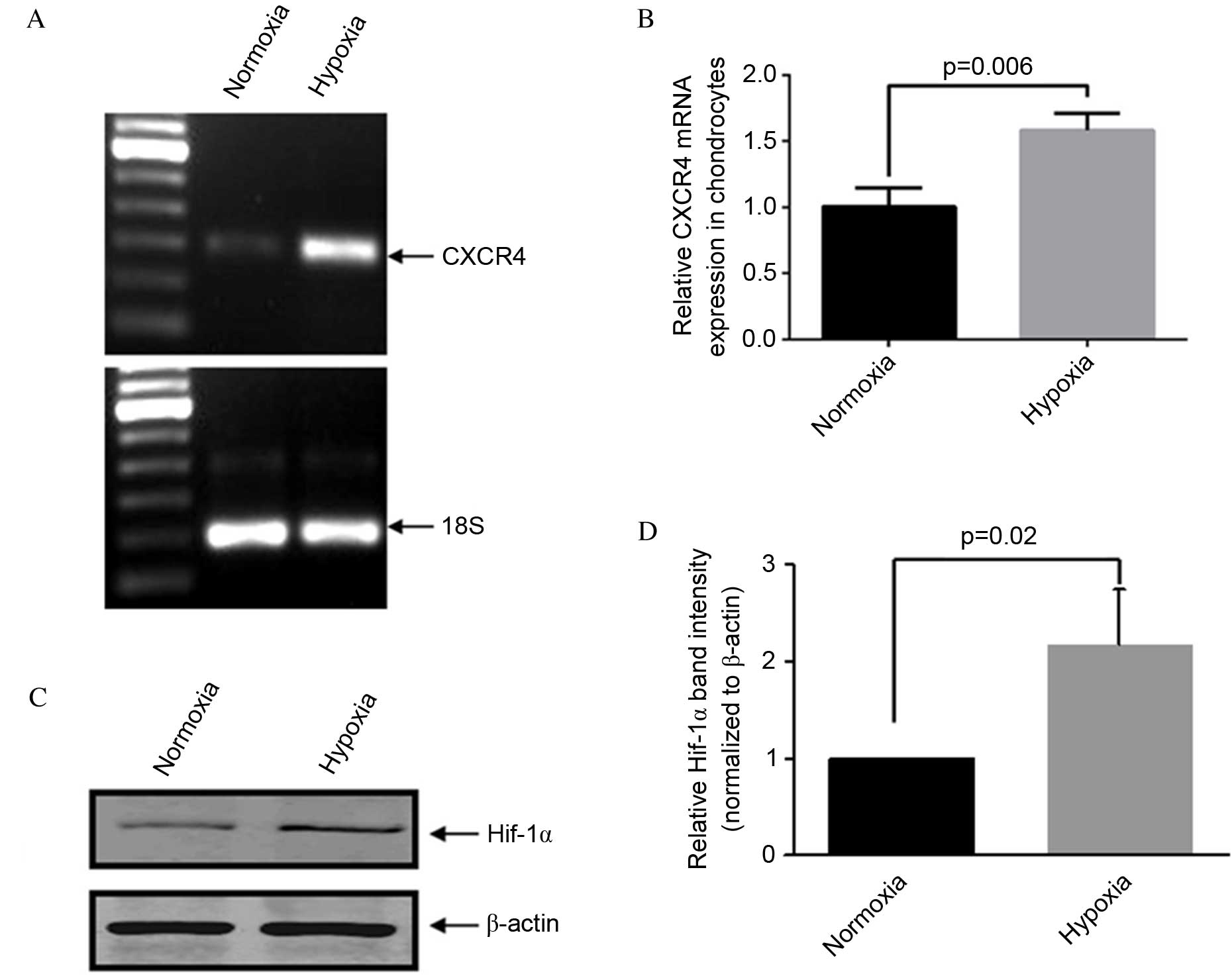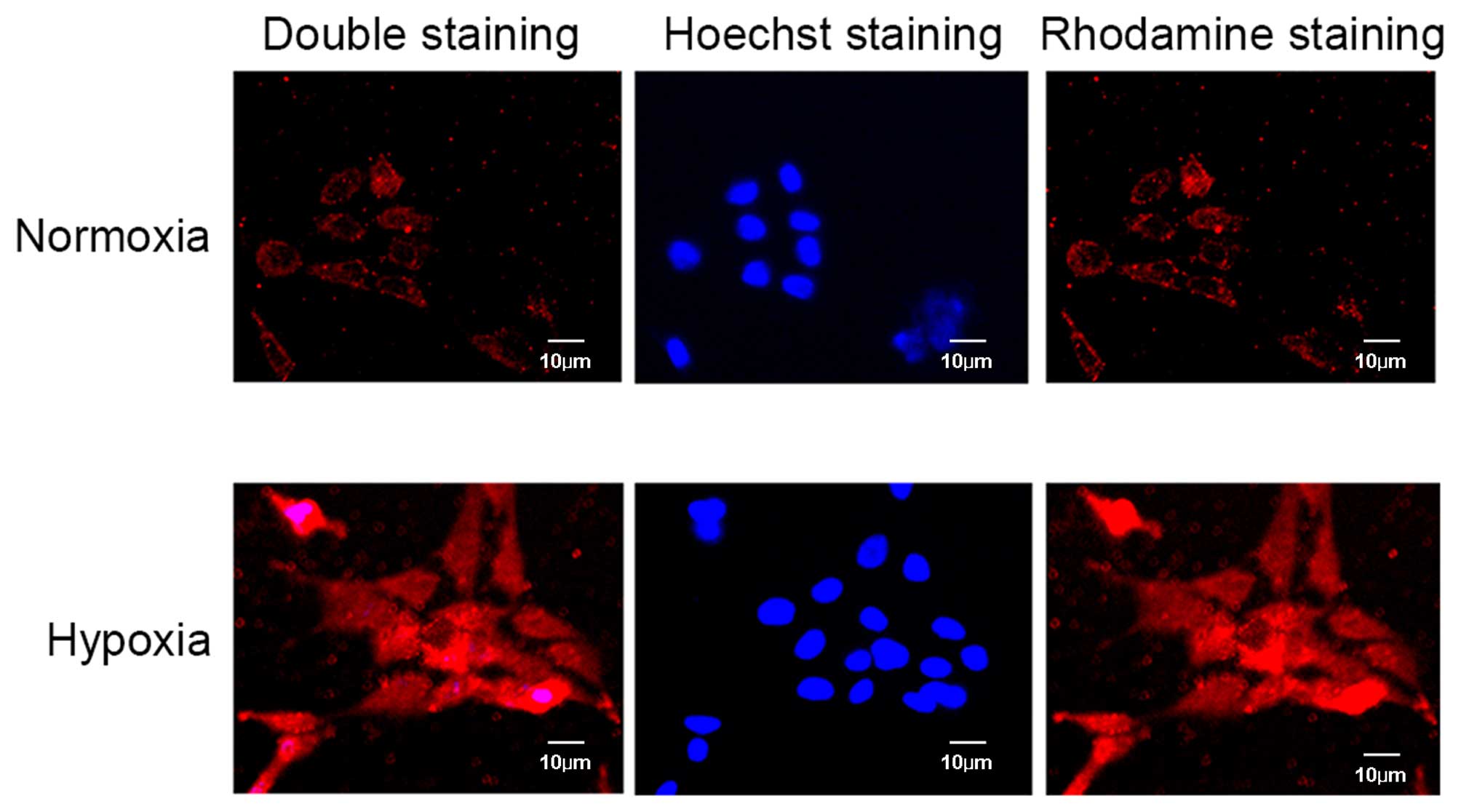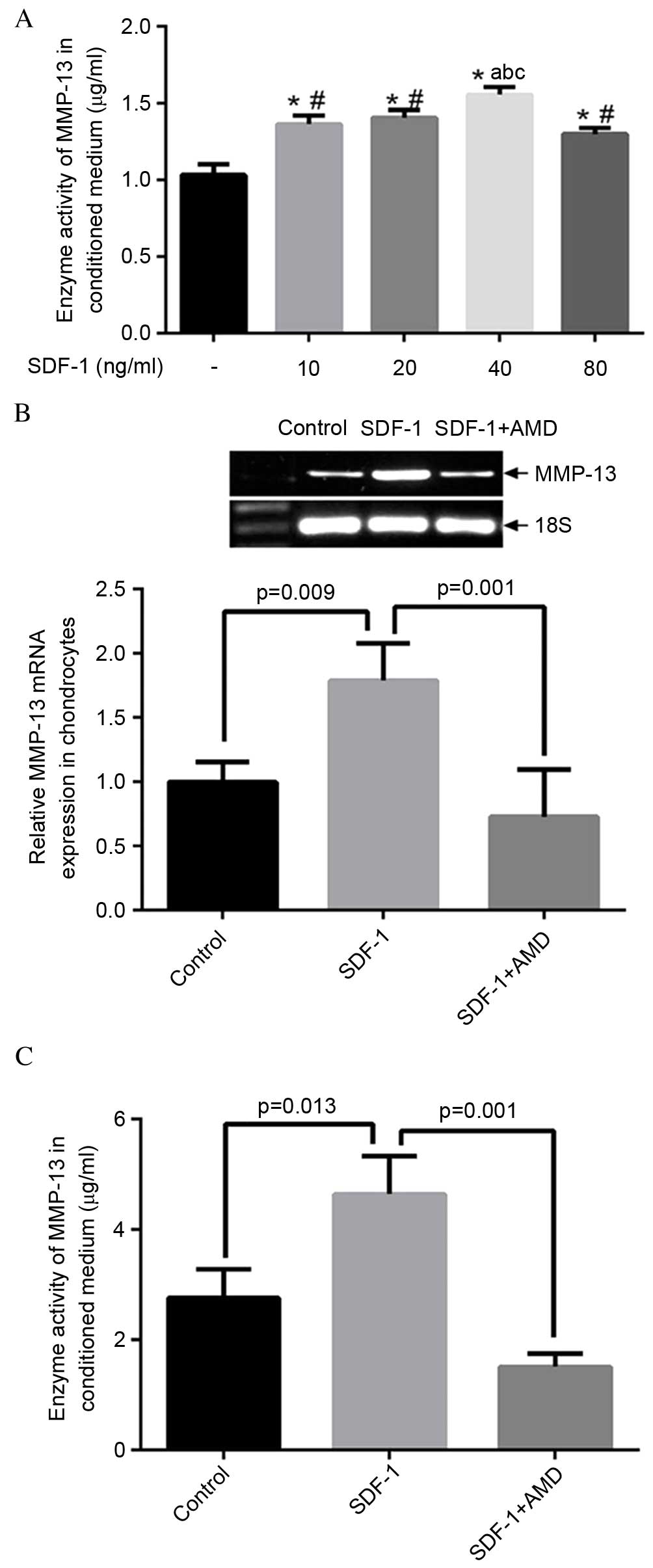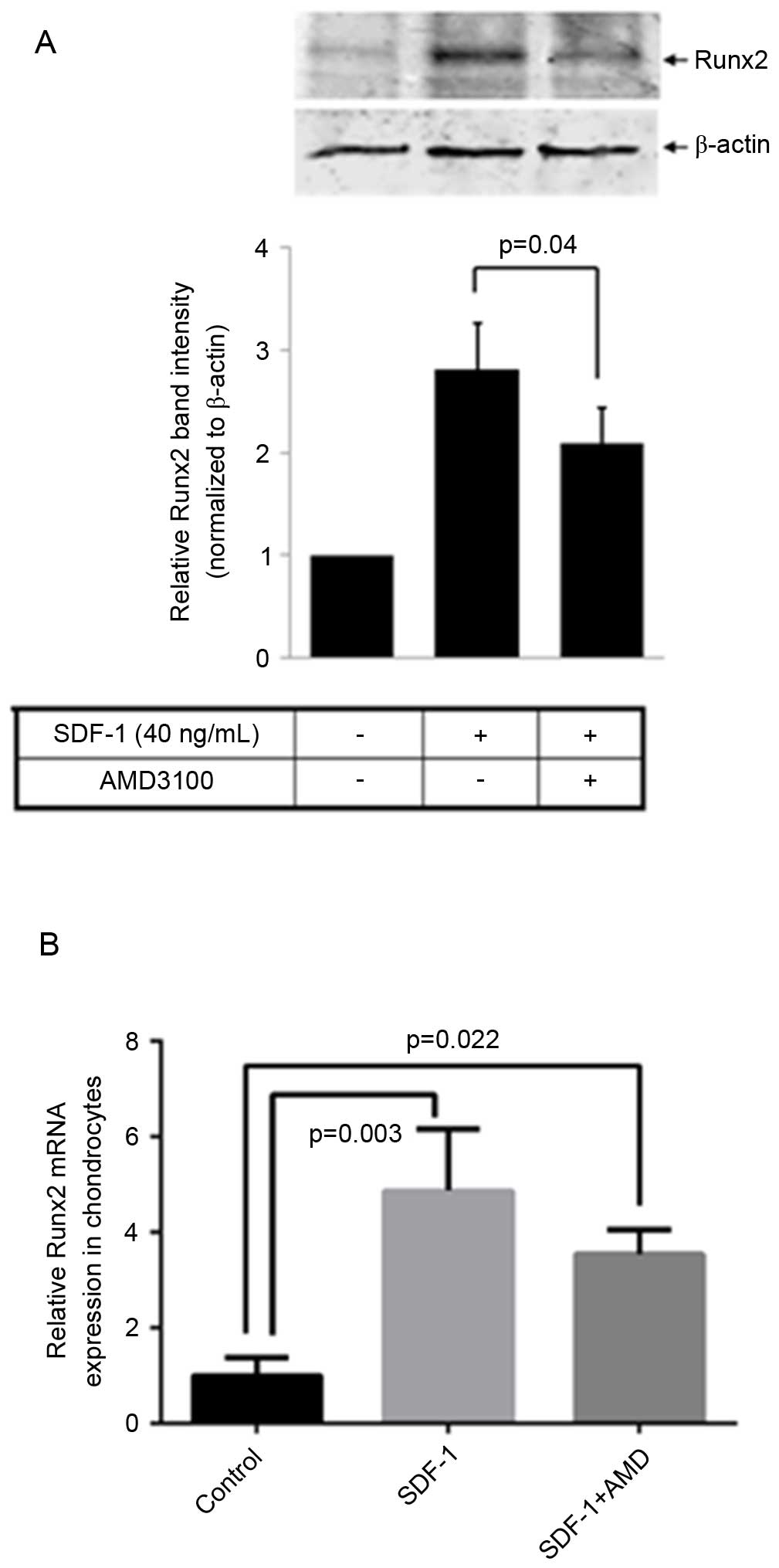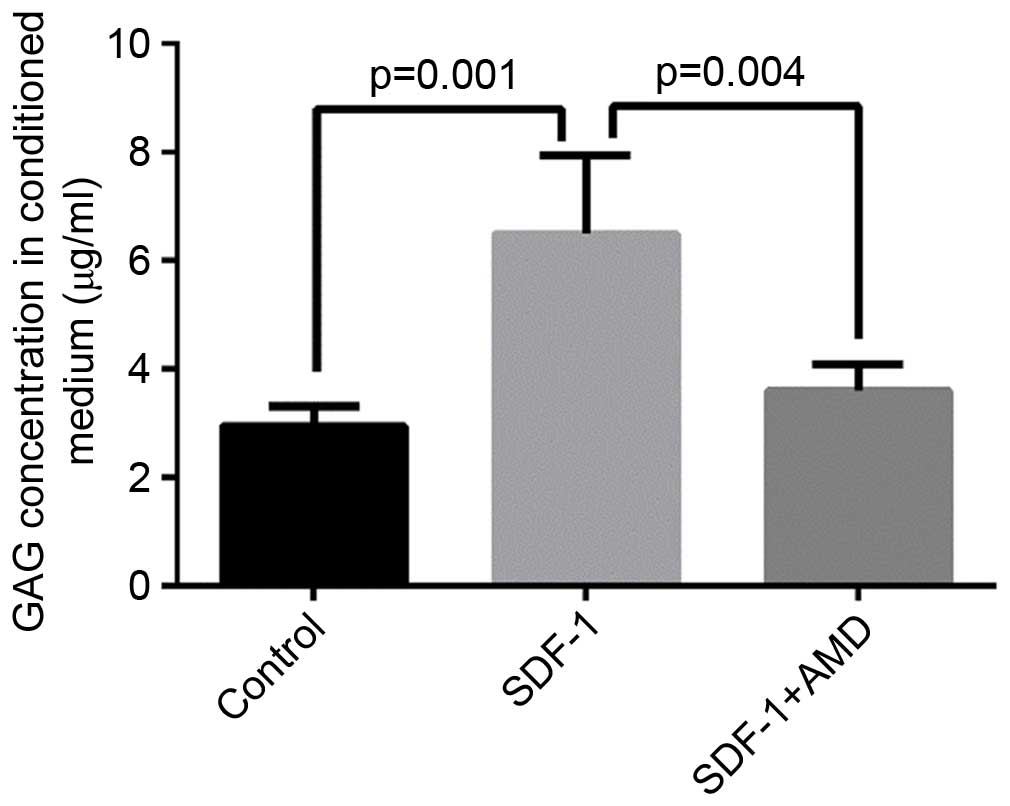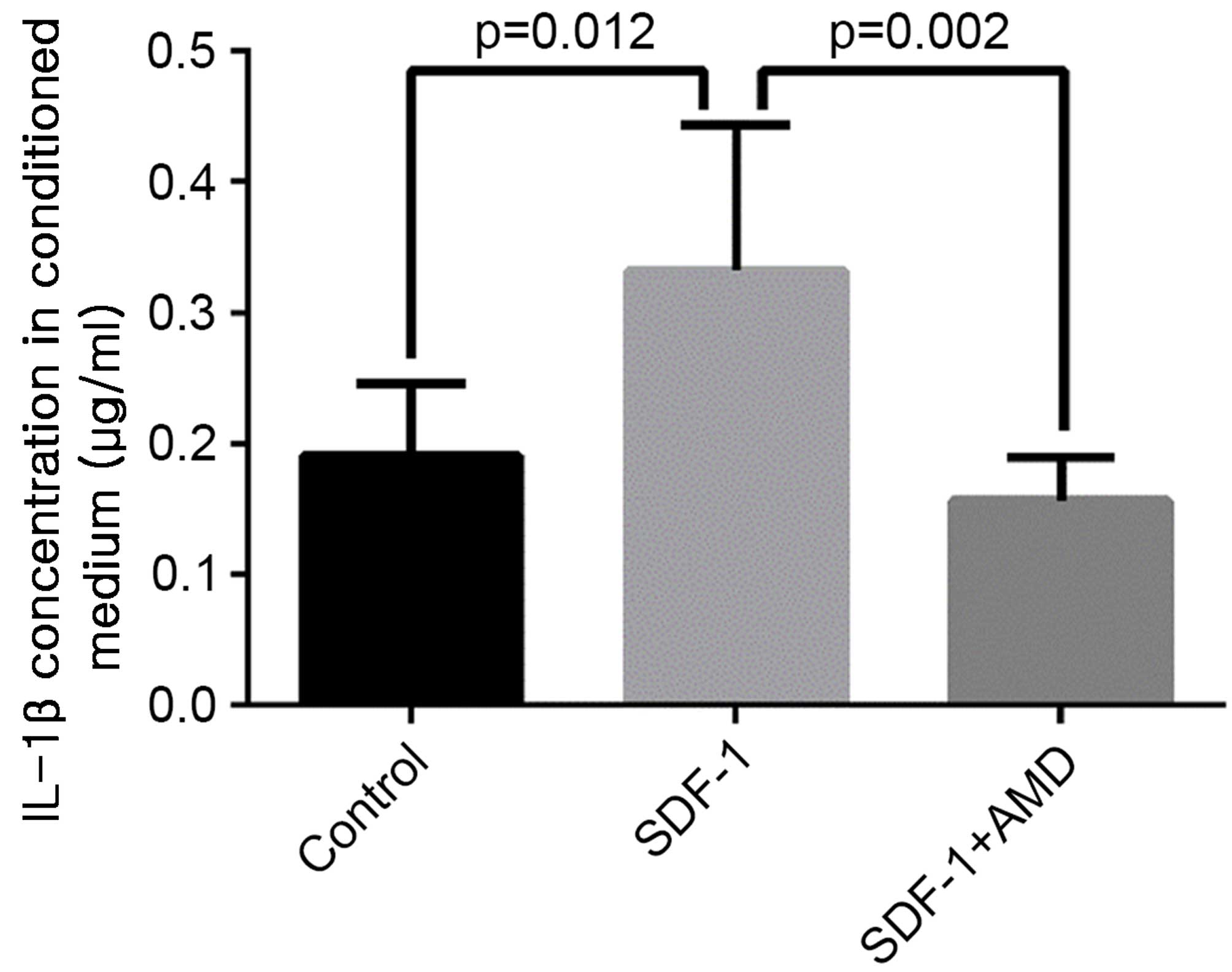|
1
|
Arden N and Nevitt MC: Osteoarthritis:
Epidemiology. Best Pract Res Clin Rheumatol. 20:3–25. 2006.
View Article : Google Scholar : PubMed/NCBI
|
|
2
|
Miller ME, Rejeski WJ, Messier SP and
Loeser RF: Modifiers of change in physical functioning in older
adults with knee pain: The Observational Arthritis Study in Seniors
(OASIS). Arthritis Rheum. 45:331–339. 2001. View Article : Google Scholar : PubMed/NCBI
|
|
3
|
Martel-Pelletier J, Boileau C, Pelletier
JP and Roughley PJ: Cartilage in normal and osteoarthritis
conditions. Best Pract Res Clin Rheumatol. 22:351–384. 2008.
View Article : Google Scholar : PubMed/NCBI
|
|
4
|
Aida Y, Maeno M, Suzuki N, Shiratsuchi H,
Motohashi M and Matsumura H: The effect of IL-1beta on the
expression of matrix metalloproteinases and tissue inhibitors of
matrix metalloproteinases in human chondrocytes. Life Sci.
77:3210–3221. 2005. View Article : Google Scholar : PubMed/NCBI
|
|
5
|
Daheshia M and Yao JQ: The interleukin
1beta pathway in the pathogenesis of osteoarthritis. J Rheumatol.
35:2306–2312. 2008. View Article : Google Scholar : PubMed/NCBI
|
|
6
|
Mitchell PG, Magna HA, Reeves LM,
Lopresti-Morrow LL, Yocum SA, Rosner PJ, Geoghegan KF and Hambor
JE: Cloning, expression, and type II collagenolytic activity of
matrix metal-loproteinase-13 from human osteoarthritic cartilage. J
Clin Invest. 97:761–768. 1996. View Article : Google Scholar : PubMed/NCBI
|
|
7
|
Jayasuriya CT, Goldring MB, Terek R and
Chen Q: Matrilin-3 induction of IL-1 receptor antagonist is
required for up-regulating collagen II and aggrecan and
down-regulating ADAMTS-5 gene expression. Arthritis Res Ther.
14:R1972012. View
Article : Google Scholar : PubMed/NCBI
|
|
8
|
Wei L, Kanbe K, Lee M, Wei X, Pei M, Sun
X, Terek R and Chen Q: Stimulation of chondrocyte hypertrophy by
chemokine stromal cell-derived factor 1 in the chondro-osseous
junction during endochondral bone formation. Dev Biol. 341:236–245.
2010. View Article : Google Scholar : PubMed/NCBI
|
|
9
|
Kanbe K, Takagishi K and Chen Q:
Stimulation of matrix metalloprotease 3 release from human
chondrocytes by the interaction of stromal cell-derived factor 1
and CXC chemokine receptor 4. Arthritis Rheum. 46:130–137. 2002.
View Article : Google Scholar : PubMed/NCBI
|
|
10
|
Wei L, Sun X, Kanbe K, Wang Z, Sun C,
Terek R and Chen Q: Chondrocyte death induced by pathological
concentration of chemokine stromal cell-derived factor-1. J
Rheumatol. 33:1818–1826. 2006.PubMed/NCBI
|
|
11
|
Kanbe K, Takemura T, Takeuchi K, Chen Q,
Takagishi K and Inoue K: Synovectomy reduces stromal-cell-derived
factor-1 (SDF-1) which is involved in the destruction of cartilage
in osteoarthritis and rheumatoid arthritis. J Bone Joint Surg Br.
86:296–300. 2004. View Article : Google Scholar : PubMed/NCBI
|
|
12
|
Jiménez MJ, Balbín M, López JM, Alvarez J,
Komori T and López-Otín C: Collagenase 3 is a target of Cbfa1, a
transcription factor of the runt gene family involved in bone
formation. Mol Cell Biol. 19:4431–4442. 1999. View Article : Google Scholar : PubMed/NCBI
|
|
13
|
Wang X, Manner PA, Horner A, Shum L, Tuan
RS and Nuckolls GH: Regulation of MMP-13 expression by RUNX2 and
FGF2 in osteoarthritic cartilage. Osteoarthritis Cartilage.
12:963–973. 2004. View Article : Google Scholar : PubMed/NCBI
|
|
14
|
Zhu W, Boachie-Adjei O, Rawlins BA,
Frenkel B, Boskey AL, Ivashkiv LB and Blobel CP: A novel regulatory
role for stromal-derived factor-1 signaling in bone morphogenic
protein-2 osteogenic differentiation of mesenchymal C2C12 cells. J
Biol Chem. 282:18676–18685. 2007. View Article : Google Scholar : PubMed/NCBI
|
|
15
|
Lund-Olesen K: Oxygen tension in synovial
fluids. Arthritis Rheum. 13:769–776. 1970. View Article : Google Scholar : PubMed/NCBI
|
|
16
|
Zhou S, Cui Z and Urban JP: Factors
influencing the oxygen concentration gradient from the synovial
surface of articular cartilage to the cartilage-bone interface: A
modeling study. Arthritis Rheum. 50:3915–3924. 2004. View Article : Google Scholar : PubMed/NCBI
|
|
17
|
Koay EJ and Athanasiou KA: Hypoxic
chondrogenic differentiation of human embryonic stem cells enhances
cartilage protein synthesis and biomechanical functionality.
Osteoarthritis Cartilage. 16:1450–1456. 2008. View Article : Google Scholar : PubMed/NCBI
|
|
18
|
Schioppa T, Uranchimeg B, Saccani A,
Biswas SK, Doni A, Rapisarda A, Bernasconi S, Saccani S, Nebuloni
M, Vago L, et al: Regulation of the chemokine receptor CXCR4 by
hypoxia. J Exp Med. 198:1391–1402. 2003. View Article : Google Scholar : PubMed/NCBI
|
|
19
|
Staller P, Sulitkova J, Lisztwan J, Moch
H, Oakeley EJ and Krek W: Chemokine receptor CXCR4 downregulated by
von Hippel-Lindau tumour suppressor pVHL. Nature. 425:307–311.
2003. View Article : Google Scholar : PubMed/NCBI
|
|
20
|
De Clercq E: The bicyclam AMD3100 story.
Nat Rev Drug Discov. 2:581–587. 2003. View
Article : Google Scholar : PubMed/NCBI
|
|
21
|
Pulsatelli L, Dolzani P, Piacentini A,
Silvestri T, Ruggeri R, Gualtieri G, Meliconi R and Facchini A:
Chemokine production by human chondrocytes. J Rheumatol.
26:1992–2001. 1999.PubMed/NCBI
|
|
22
|
Sun X, Wei L, Chen Q and Terek RM:
CXCR4/SDF1 mediate hypoxia induced chondrosarcoma cell invasion
through ERK signaling and increased MMP1 expression. Mol Cancer.
9:172010. View Article : Google Scholar : PubMed/NCBI
|
|
23
|
Sun X, Charbonneau C, Wei L, Yang W, Chen
Q and Terek RM: CXCR4-targeted therapy inhibits VEGF expression and
chondrosarcoma angiogenesis and metastasis. Mol Cancer Ther.
12:1163–1170. 2013. View Article : Google Scholar : PubMed/NCBI
|
|
24
|
Farndale RW, Buttle DJ and Barrett AJ:
Improved quantitation and discrimination of sulphated
glycosaminoglycans by use of dimethylmethylene blue. Biochim
Biophys Acta. 883:173–177. 1986. View Article : Google Scholar : PubMed/NCBI
|
|
25
|
Guan YJ, Yang X, Wei L and Chen Q:
MiR-365: A mechanosensitive microRNA stimulates chondrocyte
differentiation through targeting histone deacetylase 4. FASEB J.
25:4457–4466. 2011. View Article : Google Scholar : PubMed/NCBI
|
|
26
|
Livak KJ and Schmittgen TD: Analysis of
relative gene expression data using real-time quantitative PCR and
the 2(-Delta Delta C(T)) method. Methods. 25:402–408. 2001.
View Article : Google Scholar
|
|
27
|
Lohmander S: Proteoglycans of joint
cartilage. Structure, function, turnover and role as markers of
joint disease. Baillieres Clin Rheumatol. 2:37–62. 1988. View Article : Google Scholar : PubMed/NCBI
|
|
28
|
Krasnokutsky S, Attur M, Palmer G, Samuels
J and Abramson SB: Current concepts in the pathogenesis of
osteoarthritis. Osteoarthritis Cartilage. (16 Suppl 3): S1–S3.
2008. View Article : Google Scholar : PubMed/NCBI
|
|
29
|
Goldring MB: Osteoarthritis and cartilage:
The role of cytokines. Curr Rheumatol Rep. 2:459–465. 2000.
View Article : Google Scholar : PubMed/NCBI
|
|
30
|
Guilak F: Biomechanical factors in
osteoarthritis. Best Pract Res Clin Rheumatol. 25:815–823. 2011.
View Article : Google Scholar
|
|
31
|
Wei F, Moore DC, Li Y, Zhang G, Wei X, Lee
JK and Wei L: Attenuation of osteoarthritis via blockade of the
SDF-1/CXCR4 signaling pathway. Arthritis Res Ther. 14:R1772012.
View Article : Google Scholar : PubMed/NCBI
|
|
32
|
Ganju RK, Brubaker SA, Meyer J, Dutt P,
Yang Y, Qin S, Newman W and Groopman JE: The alpha-chemokine,
stromal cell-derived factor-1alpha, binds to the transmembrane
G-protein-coupled CXCR-4 receptor and activates multiple signal
transduction pathways. J Biol Chem. 273:23169–23175. 1998.
View Article : Google Scholar : PubMed/NCBI
|
|
33
|
Dreier R: Hypertrophic differentiation of
chondrocytes in osteoarthritis: The developmental aspect of
degenerative joint disorders. Arthritis Res Ther. 12:2162010.
View Article : Google Scholar : PubMed/NCBI
|
|
34
|
van der Kraan PM and van den Berg WB:
Chondrocyte hypertrophy and osteoarthritis: Role in initiation and
progression of cartilage degeneration? Osteoarthritis Cartilage.
20:223–232. 2012. View Article : Google Scholar
|
|
35
|
Massova I, Kotra LP, Fridman R and
Mobashery S: Matrix metalloproteinases: Structures, evolution, and
diversification. FASEB J. 12:1075–1095. 1998.PubMed/NCBI
|
|
36
|
Knäuper V, Will H, López-Otin C, Smith B,
Atkinson SJ, Stanton H, Hembry RM and Murphy G: Cellular mechanisms
for human procollagenase-3 (MMP-13) activation. Evidence that
MT1-MMP (MMP-14) and gelatinase a (MMP-2) are able to generate
active enzyme. J Biol Chem. 271:17124–17131. 1996. View Article : Google Scholar : PubMed/NCBI
|
|
37
|
Billinghurst RC, Dahlberg L, Ionescu M,
Reiner A, Bourne R, Rorabeck C, Mitchell P, Hambor J, Diekmann O,
Tschesche H, et al: Enhanced cleavage of type II collagen by
collagenases in osteoarthritic articular cartilage. J Clin Invest.
99:1534–1545. 1997. View Article : Google Scholar : PubMed/NCBI
|
|
38
|
Enomoto H, Enomoto-Iwamoto M, Iwamoto M,
Nomura S, Himeno M, Kitamura Y, Kishimoto T and Komori T: Cbfa1 is
a positive regulatory factor in chondrocyte maturation. J Biol
Chem. 275:8695–8702. 2000. View Article : Google Scholar : PubMed/NCBI
|
|
39
|
Ueta C, Iwamoto M, Kanatani N, Yoshida C,
Liu Y, Enomoto-Iwamoto M, Ohmori T, Enomoto H, Nakata K, Takada K,
et al: Skeletal malformations caused by overexpression of Cbfa1 or
its dominant negative form in chondrocytes. J Cell Biol.
153:87–100. 2001. View Article : Google Scholar : PubMed/NCBI
|
|
40
|
Kim IS, Otto F, Zabel B and Mundlos S:
Regulation of chondrocyte differentiation by Cbfa1. Mech Dev.
80:159–170. 1999. View Article : Google Scholar : PubMed/NCBI
|
|
41
|
Zheng Q, Zhou G, Morello R, Chen Y,
Garcia-Rojas X and Lee B: Type X collagen gene regulation by Runx2
contributes directly to its hypertrophic chondrocyte-specific
expression in vivo. J Cell Biol. 162:833–842. 2003. View Article : Google Scholar : PubMed/NCBI
|
|
42
|
Ducy P, Zhang R, Geoffroy V, Ridall AL and
Karsenty G: Osf2/Cbfa1: A transcriptional activator of osteoblast
differentiation. Cell. 89:747–754. 1997. View Article : Google Scholar : PubMed/NCBI
|
|
43
|
Karsenty G and Wagner EF: Reaching a
genetic and molecular understanding of skeletal development. Dev
Cell. 2:389–406. 2002. View Article : Google Scholar : PubMed/NCBI
|
|
44
|
Kamekura S, Kawasaki Y, Hoshi K, Shimoaka
T, Chikuda H, Maruyama Z, Komori T, Sato S, Takeda S, Karsenty G,
et al: Contribution of runt-related transcription factor 2 to the
pathogenesis of osteoarthritis in mice after induction of knee
joint instability. Arthritis Rheum. 54:2462–2470. 2006. View Article : Google Scholar : PubMed/NCBI
|
|
45
|
Pendás AM, Balbín M, Llano E, Jiménez MG
and López-Otín C: Structural analysis and promoter characterization
of the human collagenase-3 gene (MMP13). Genomics. 40:222–233.
1997. View Article : Google Scholar : PubMed/NCBI
|
|
46
|
Guang LG, Boskey AL and Zhu W: Regulatory
role of stromal cell-derived factor-1 in bone morphogenetic
protein-2-induced chondrogenic differentiation in vitro. Int J
Biochem Cell Biol. 44:1825–1833. 2012. View Article : Google Scholar : PubMed/NCBI
|
|
47
|
De Clercq E, Yamamoto N, Pauwels R, Baba
M, Schols D, Nakashima H, Balzarini J, Debyser Z, Murrer BA,
Schwartz D, et al: Potent and selective inhibition of human
immunodeficiency virus (HIV)-1 and HIV-2 replication by a class of
bicyclams interacting with a viral uncoating event. Proc Natl Acad
Sci USA. 89:5286–5290. 1992. View Article : Google Scholar : PubMed/NCBI
|
|
48
|
Ma Q, Jones D, Borghesani PR, Segal RA,
Nagasawa T, Kishimoto T, Bronson RT and Springer TA: Impaired
B-lymphopoiesis, myelopoiesis, and derailed cerebellar neuron
migration in CXCR4- and SDF-1-deficient mice. Proc Natl Acad Sci
USA. 95:9448–9453. 1998. View Article : Google Scholar : PubMed/NCBI
|
|
49
|
Matthys P, Hatse S, Vermeire K, Wuyts A,
Bridger G, Henson GW, De Clercq E, Billiau A and Schols D: AMD3100,
a potent and specific antagonist of the stromal cell-derived
factor-1 chemokine receptor CXCR4, inhibits autoimmune joint
inflammation in IFN-gamma receptor-deficient mice. J Immunol.
167:4686–4692. 2001. View Article : Google Scholar : PubMed/NCBI
|
|
50
|
Hendrix CW, Flexner C, MacFarland RT,
Giandomenico C, Fuchs EJ, Redpath E, Bridger G and Henson GW:
Pharmacokinetics and safety of AMD-3100, a novel antagonist of the
CXCR-4 chemokine receptor, in human volunteers. Antimicrob Agents
Chemother. 44:1667–1673. 2000. View Article : Google Scholar : PubMed/NCBI
|
|
51
|
Hendrix CW, Collier AC, Lederman MM,
Schols D, Pollard RB, Brown S, Jackson JB, Coombs RW, Glesby MJ,
Flexner CW, et al: Safety, pharmacokinetics, and antiviral activity
of AMD3100, a selective CXCR4 receptor inhibitor, in HIV-1
infection. J Acquir Immune Defic Syndr. 37:1253–1262. 2004.
View Article : Google Scholar : PubMed/NCBI
|



